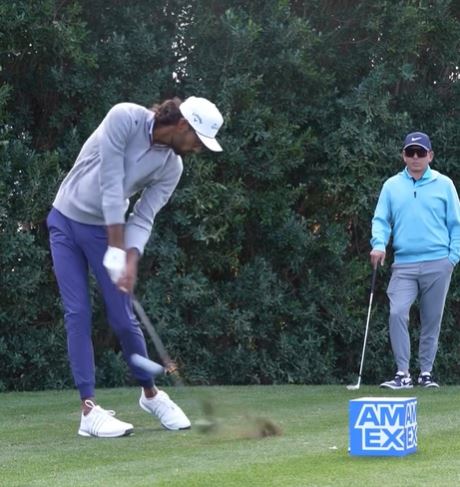
Understanding Golf Club Length and Lie Angle
The length and lie angle of a golf club are crucial factors in ensuring optimal performance and comfort on the golf course. These elements affect your posture, swing mechanics, and the accuracy of your shots. Below, we delve into how to determine the appropriate club length and lie angle based on height and other factors, providing a comprehensive guide for golfers ranging from 5 feet to 6 feet 6 inches tall. This info should help solidify the decisions you are making when order custom irons or wedges!
Golf Club Length
Determining Club Length
The length of a golf club is typically measured from the top of the grip to the sole of the clubhead. Proper club length is essential for maintaining the correct posture and swing mechanics. A club that's too long or too short can lead to poor shots and even physical discomfort.
Height-Based Recommendations
Here is a guideline for proper club length based on a golfer's height:
| Golfer's Height (Feet and Inches) | Suggested Club Length Adjustment |
|---|---|
| 5'0" to 5'2" | -1.5 inches |
| 5'2" to 5'4" | -1 inch |
| 5'4" to 5'6" | -0.5 inches |
| 5'6" to 5'8" | Standard Length |
| 5'8" to 5'10" | Standard Length |
| 5'10" to 6'0" | Standard Length |
| 6'0" to 6'2" | +0.5 inches |
| 6'2" to 6'4" | +1 inch |
| 6'4" to 6'6" | +1.5 inches |
Wrist-to-Floor Measurement
For a more precise fit, the wrist-to-floor measurement is often used. This method considers the distance from the floor to the wrist crease when standing naturally, providing a more tailored club length recommendation that accounts for individual body proportions.

Lie Angle
Understanding Lie Angle
The lie angle is the angle formed between the club shaft and the ground when the clubhead is in its proper address position. It significantly influences the direction and trajectory of the ball flight. A correct lie angle ensures that the club makes solid contact with the ball, promoting straight and consistent shots.
Effects of Incorrect Lie Angle
-
Too Upright: The clubface points left of the target (for right-handed golfers), leading to shots that start left.
-
Too Flat: The clubface points right of the target, resulting in shots that start right.
Determining the Correct Lie Angle
Finding the right lie angle involves considering several factors:
-
Swing Dynamics: A golfer's swing plane and style can affect the ideal lie angle. For instance, a flatter swing might require a flatter lie angle.
-
Body Dimensions: Height, arm length, and posture influence the lie angle. Taller players might need a flatter lie angle, while shorter players might benefit from a more upright angle.
-
Impact Analysis: Tools like lie boards and impact tape can help determine how the club interacts with the turf and the ball, providing insights into necessary lie angle adjustments.
Why it matters when you are ordering your new irons or wedges...
Selecting the right golf club length and lie angle is crucial for enhancing performance and comfort on the course. The above height-based guidelines provide a good starting point, factors such as wrist-to-floor measurement and swing style, provide a more personalized approach. By understanding and adjusting these options, you can achieve better ball striking, improved accuracy, and greater enjoyment of the game!
